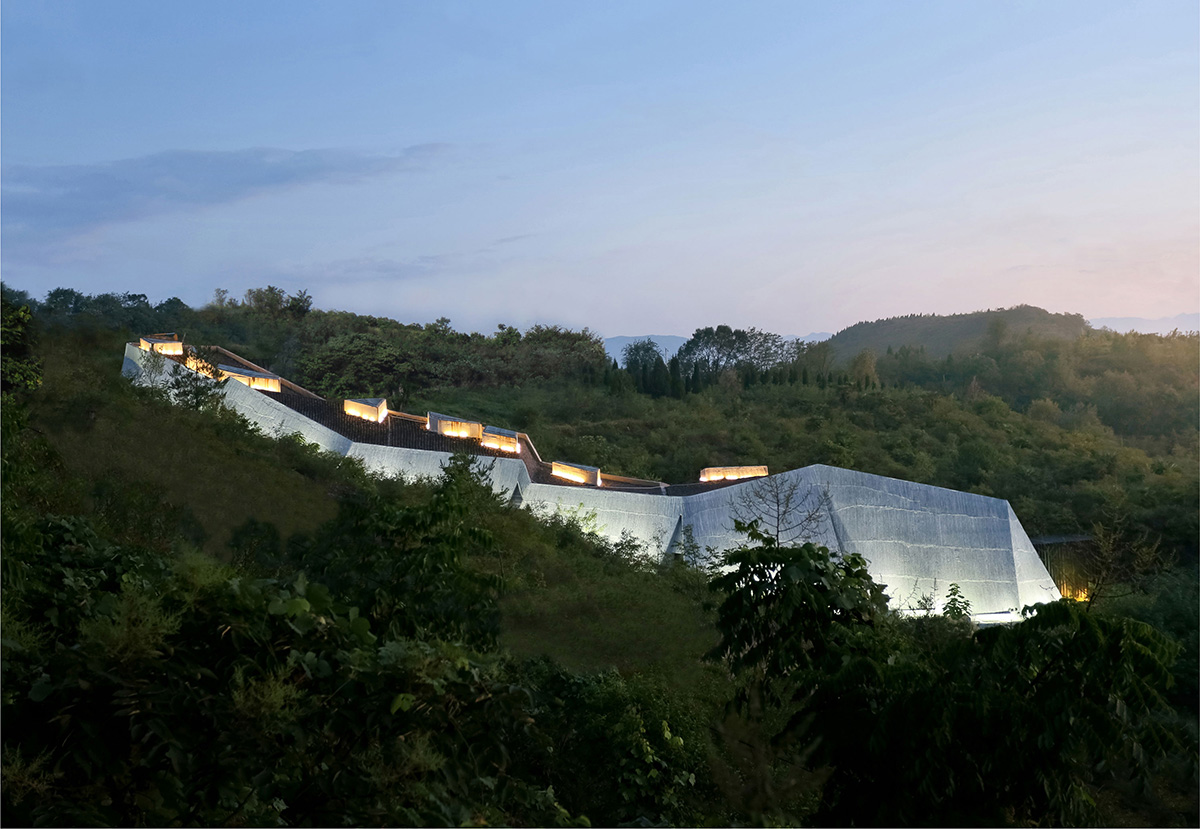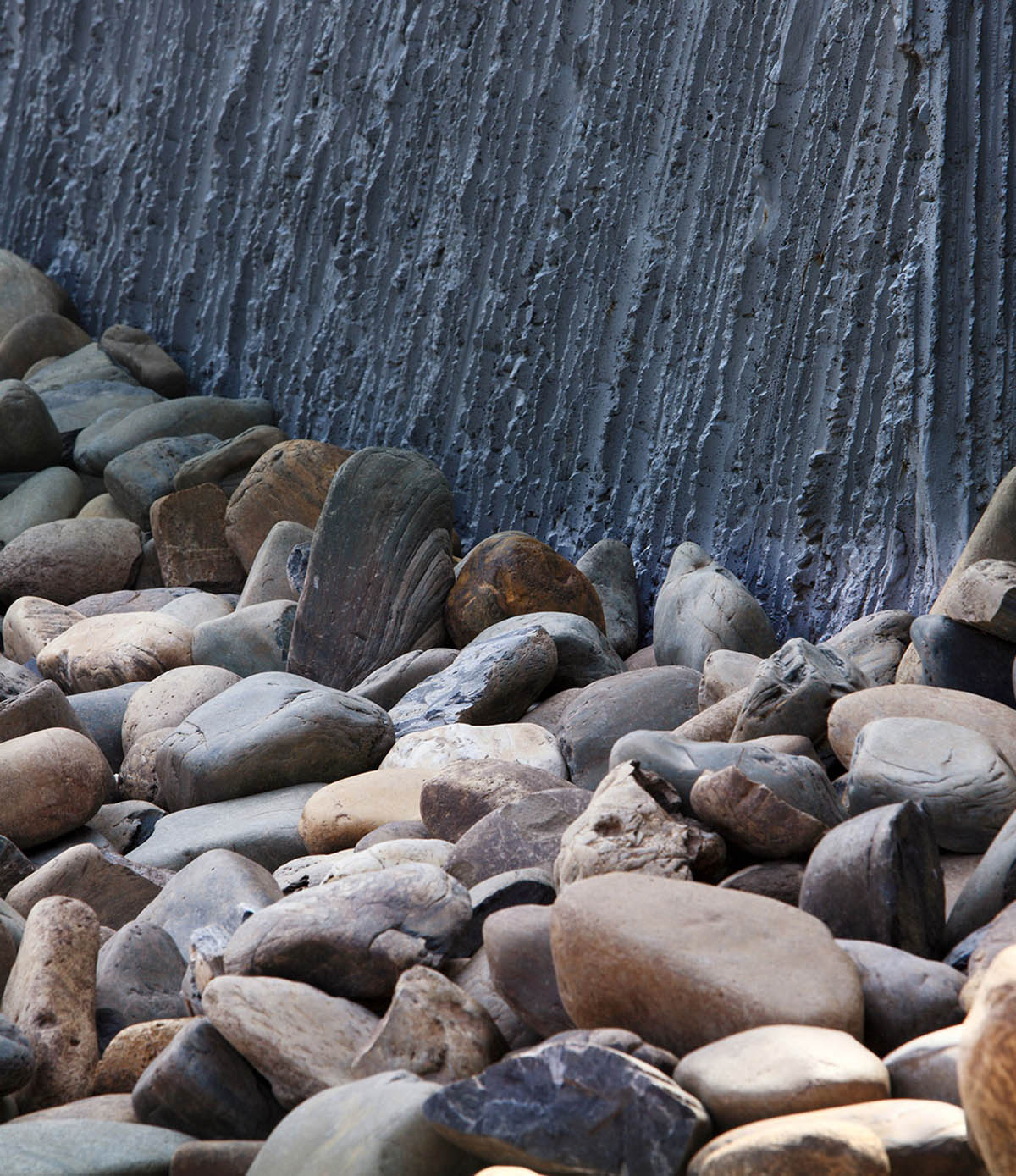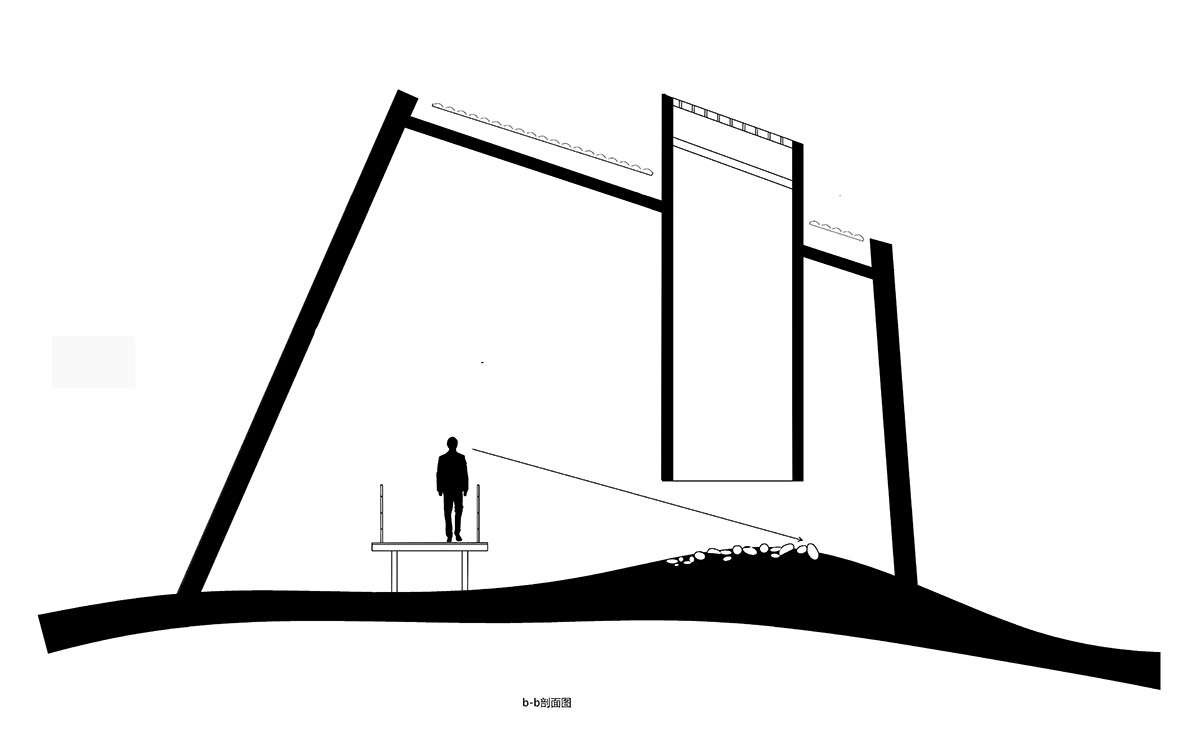Submitted by WA Contents
Dinosaur Egg Museum invisibly stretched along In Qinglong Mountain National Geo-Park China
China Architecture News - Jul 10, 2018 - 04:20 19663 views

A museum is invisibly stretched along in the natural topography of Qinglong Mountain National Geo-Park of China, designed by the Architectural and Urban Planning Design & Research Institute Co.Ltd. of Huazhong University of Science and Technology (HUST).
Called Dinosaur Egg Museum, the morphology of the design roots in spatial distribution of the dinosaur eggs and vertical variation of the on-site topography.

The architects were inspired by phenomenology, according to the special problems which were presented on the site, and they gave some design principles such as concerning the site, adapting for the local climate, remaining the historical memory, using suitable technologies, emphasizing the exhibits by dark atmosphere.
"The architect is by no means the dictator of building form - instead, the form of the museum is given collectively by dinosaurs from 80 million years ago, geologist on the excavation mission 4 years ago and the architect," stated in the project description.

The project, led by Baofeng LI, the Principal Architect, is made of old materials from the site and combined with new construction technique: The fast-growing local bamboo was chosen as a low-budget sustainable material.
However the conventional material is used with innovation: the bamboo was used mostly to make molds that provides concrete a unique, rough and textual finishing.

The site remained least disturbed, with the minimally- designed walking bridge gently floating above to hug around the site of the eggs, which further determines the direction and form of the architecture that serves as a silent backdrop for the site. It is a building that is modest to the site, honest to the history and respectful to the archaeological excavation.
The architects used old tiles from deserted earth houses nearby and were also recycled in an innovative way for the project. They were used to constructed second layer of the roof. Two layers of roof enables the circulation of air in between, therefore minimizing heat from entering the building during the summer day.

"The Chimneys of Light" are used to provide simple and pure "natural spotlight" for the dinosaur eggs, the only item on exhibition in the entire museum. "The Chimneys of Light" also construct a mysterious atmosphere for the exhibition.
In order to be least imposing to the site, the 70-meter-long museum was broken into some small connected pieces according to the undulating site topography.
 For joining the pieces, the architect developed a "wind-transparent but light-blocking" window system to ensure good indoor air quality, comfortable indoor temperature but dark and mysterious exhibition atmosphere.
For joining the pieces, the architect developed a "wind-transparent but light-blocking" window system to ensure good indoor air quality, comfortable indoor temperature but dark and mysterious exhibition atmosphere.




Axonometric drawing

Floor plan

Section-A

Section-B

Elevation
The Architectural and Urban Planning Design & Research Institute Co.Ltd. of Huazhong University of Science and Technology (HUST), started in 1953, is one of the earliest design institutes founded in universities directly attached to the State Ministry of Education of P.R.China.
In 2001, it was enlarged through combining three design institutes: the Architectural and the Urban Planning Design & Research Institutes of the former Wuhan Urban Construction Institute as well as the Architectural Design & Research Institute of the former HUST.
Project facts
Project name: The Dinosaur Egg Museum In Qinglong Mountain National Geo-Park China
Project location: Qinglong Mountain National-Geo-Park, Shiyan, Hubei Province, China
Design company: The Architectural and Urban Planning Design & Research Institute Co.Ltd. of Huazhong University of Science and Technology
Principle designer: Baofeng LI
Architect: Zeng Zhongzhonbg、Guo Nfan、Qu Tianming
Town Planner: Ding Jianmin
Landscape Architect: Xu Changshun
Project type: N/A
Design starting date: 2011.03
Design finish date: 2011.09
Construction starting date: 2011.11
Construction finish date: 2012.09
Site area: 5000m2
Gross floor area: 1000m2
Interior space area: 900m2
FAR:0.2
Greening rate: 60%
Structural engineer: Chen Haizhong
MEP consultant: Gan Wenxia, Shen Anfu, Wang Peiling
Lighting consultant: Li Fang
Quantity surveyor: He Jianhong
*Building materials & brand name (at least 3 types)
1.Baogui Artistic Concrete (Beijing Baogui Stone Art Technology co.LTD)
2.Local natural stone in Taihang mountain
3.Cast-in-place concrete with bamboo template
All images © Su Shengliang
> via HUST
